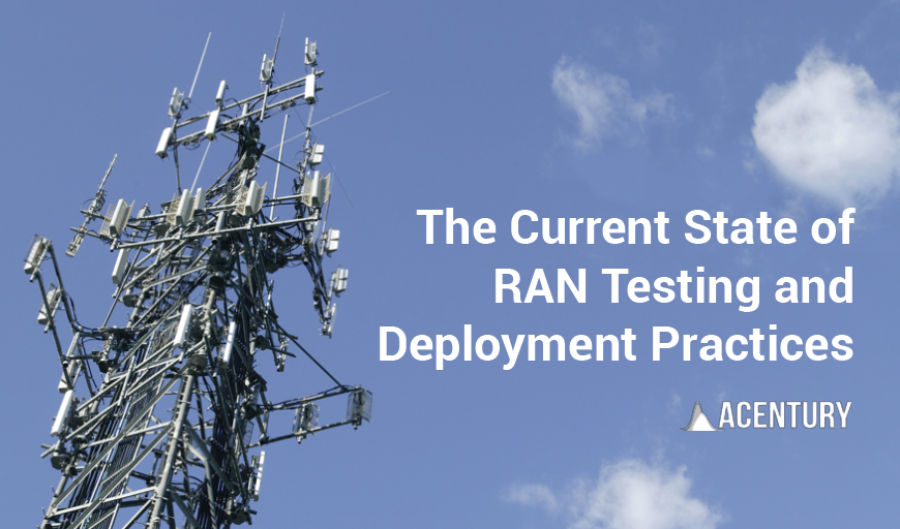
The Current State of RAN Testing and Deployment Practices
Wireless networks have become more complex than ever before. As such, all parts of the network must work together to deliver high-quality services and provide the best customer experience. In the past, operators could rely heavily on their infrastructure vendor partners to handle much of this work. Purpose-built, highly integrated equipment could handle much of the testing, and the operator could focus on validating their specific configuration choices with subscriber devices on their network to ensure that their services were delivered properly.
As a result, testing methodologies focused primarily on the lower parts of the RAN (Radio Access Network). However, today's wireless networks require a more comprehensive testing approach. In this blog post, we will discuss the current state of RAN testing and deployment practices and explore the various tools and processes used by operators to ensure that their networks are reliable and efficient.
Testing Methodologies
Operators use various testing methodologies to validate their networks. Smaller operators often rely on their network and device vendor partners to do much of the testing. They may pick a few key performance indicators to monitor and test parts of the network in isolation or perform user testing from a customer perspective. This approach is the simplest and is typically used by smaller operators.
Many operators rely heavily on emulation as part of a reasonable testing strategy. Essentially, this approach involves a UE (User Equipment) talking to something pretending to be a network, or a network talking to something pretending to be a UE or many units. However, emulation, even when done at scale, doesn't accurately reflect the real-world environment because there are too many things missing from the model. The emulation equipment makes too many assumptions about network configuration that don't represent that operator's specific implementation.
Other operators create a testing environment that replicates the real world in the lab to evaluate what the end-user will experience. This approach uses real-world equipment to the largest extent possible, such as real BBU (Baseband Units) and RUs (Remote Units), national user equipment, and sometimes even the specific RF designs, frequency assignments, carrier aggregation, and MIMO (Multiple-Input Multiple-Output). This requires the most gear and human resources but delivers the most representative results.
The RAN Testing Process
The current practice for RAN testing is typically done to validate a defined set of proposed changes to an existing configuration. Each test is generally independent and may be something exciting like a new service, a new version of base station firmware, or to help troubleshoot an issue in the field.
"Tests are typically set up manually, which can take a long time, perhaps even hours or days depending on the complexity. In fact, we see that the setup and tear-down times are often far longer than the actual testing itself."
- David Woodcock, Head of Product Strategy
At the end of each cycle, network engineering takes the results and deploys that change into the production network. Monitoring of the network happens in parallel through the usual tools like OSS (Operations Support System) and BSS (Business Support System), and they measure key performance indicators, which are monitored to determine what changes need to be made in the future, resulting in more tests to do. This approach is similar to the waterfall method in software development, where each release is developed, tested, and deployed sequentially, and the time between iterations is relatively long. However, this approach is no longer appropriate in the world of the cloud and virtualization, where things are constantly changing.
The current state of RAN testing and deployment practices is evolving to accommodate the increasing complexity of wireless networks.
To learn more about the new complexities introduced by 5G/O-RAN and cloud native architectures, read our blog post here
To learn more about our LAMTA product, click here
Contact us if you have any further questions by reaching out to us here
Related Articles
How to Use Software Control to Automate RAN Testing for Advanced Mobility Scenarios and Log Analysis
Part 2: How CI/CD methodologies can be applied to 5G RAN Testing and Deployment
Have a question or comment?
We'd love to hear it. Fill out our General Inquiry Form or reach us directly at: info@acentury.co
CONTACT US